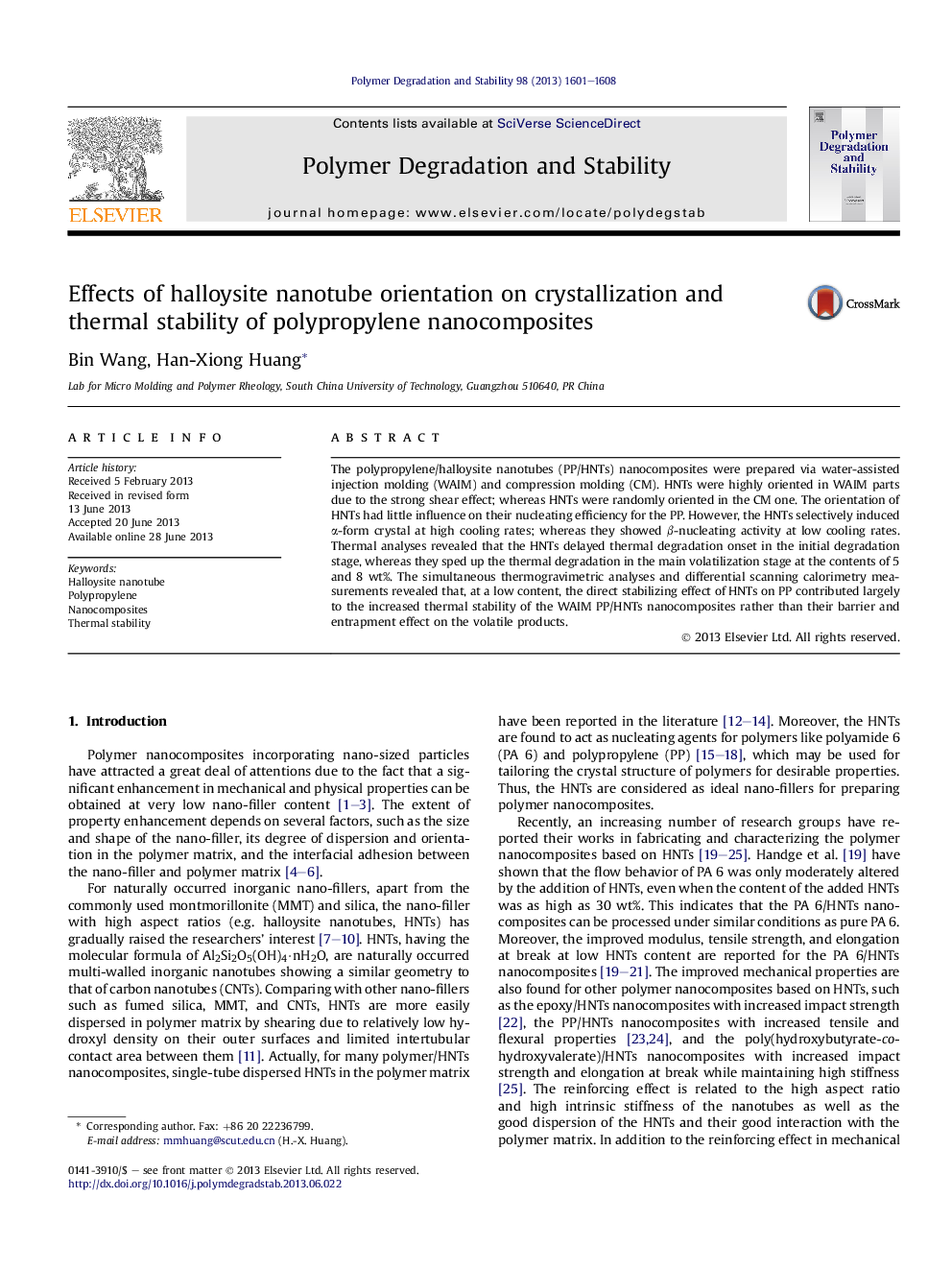| Article ID | Journal | Published Year | Pages | File Type |
|---|---|---|---|---|
| 5202012 | Polymer Degradation and Stability | 2013 | 8 Pages |
Abstract
The polypropylene/halloysite nanotubes (PP/HNTs) nanocomposites were prepared via water-assisted injection molding (WAIM) and compression molding (CM). HNTs were highly oriented in WAIM parts due to the strong shear effect; whereas HNTs were randomly oriented in the CM one. The orientation of HNTs had little influence on their nucleating efficiency for the PP. However, the HNTs selectively induced α-form crystal at high cooling rates; whereas they showed β-nucleating activity at low cooling rates. Thermal analyses revealed that the HNTs delayed thermal degradation onset in the initial degradation stage, whereas they sped up the thermal degradation in the main volatilization stage at the contents of 5 and 8 wt%. The simultaneous thermogravimetric analyses and differential scanning calorimetry measurements revealed that, at a low content, the direct stabilizing effect of HNTs on PP contributed largely to the increased thermal stability of the WAIM PP/HNTs nanocomposites rather than their barrier and entrapment effect on the volatile products.
Related Topics
Physical Sciences and Engineering
Chemistry
Organic Chemistry
Authors
Bin Wang, Han-Xiong Huang,
